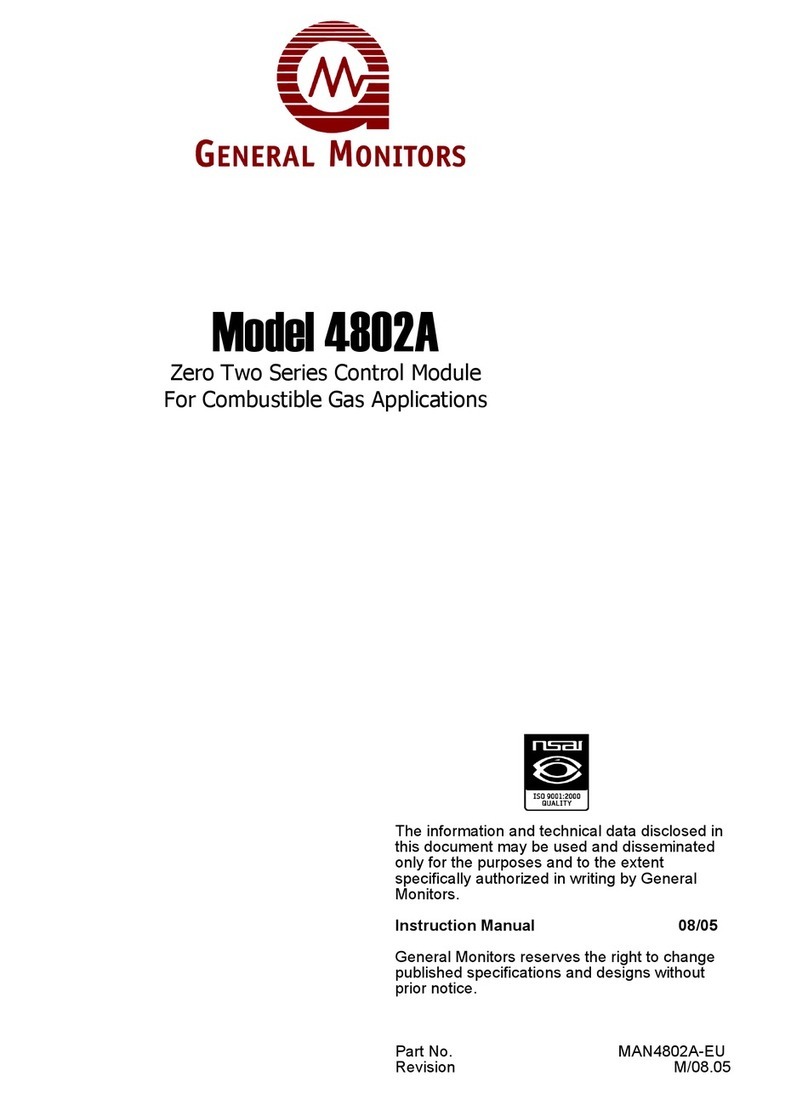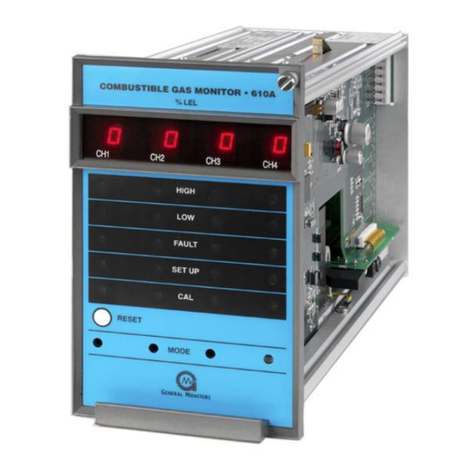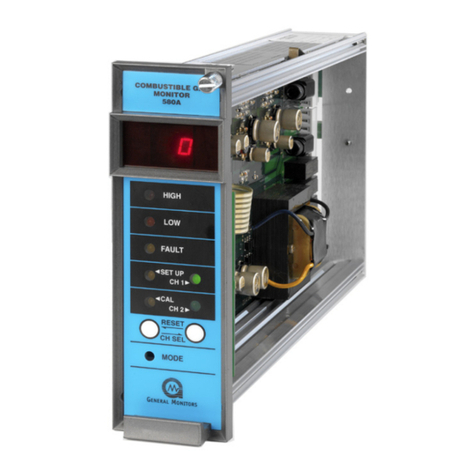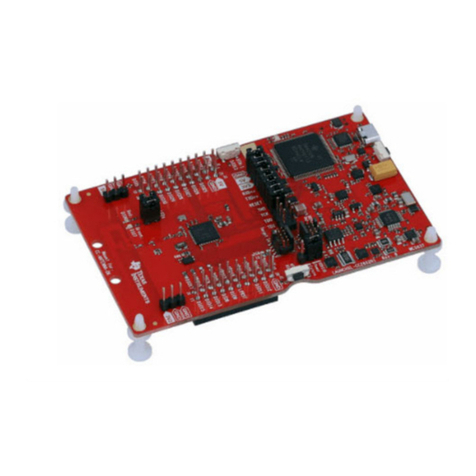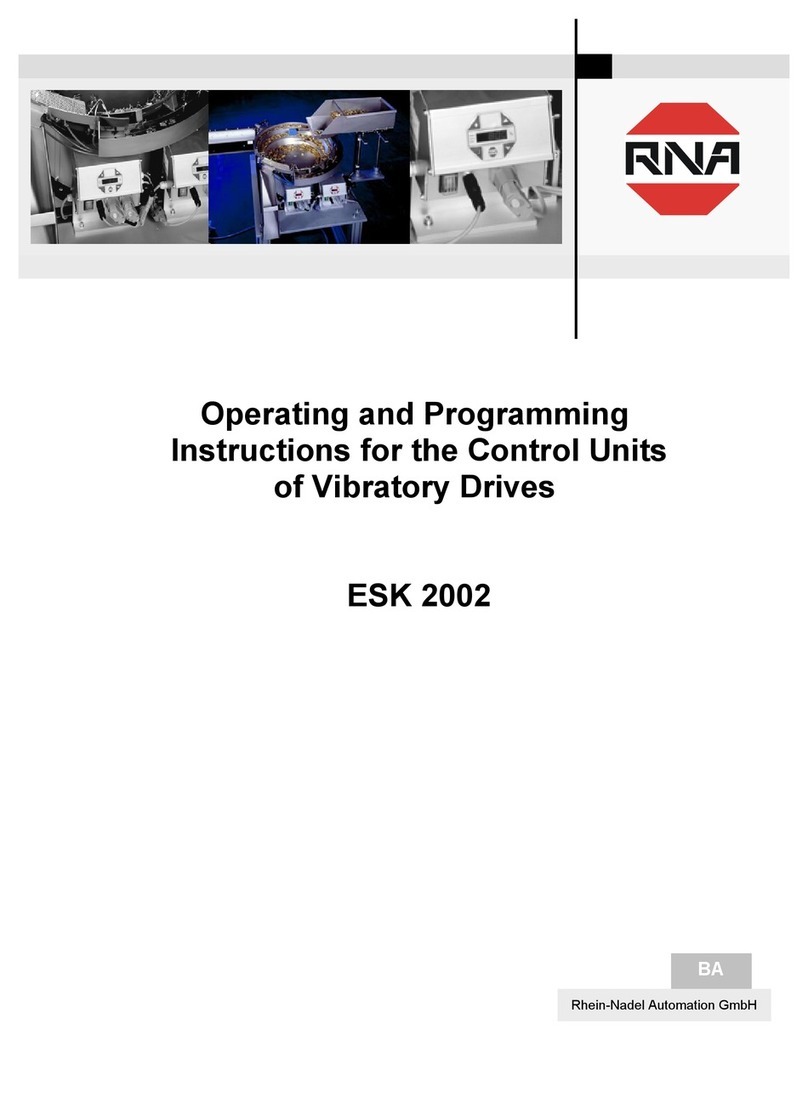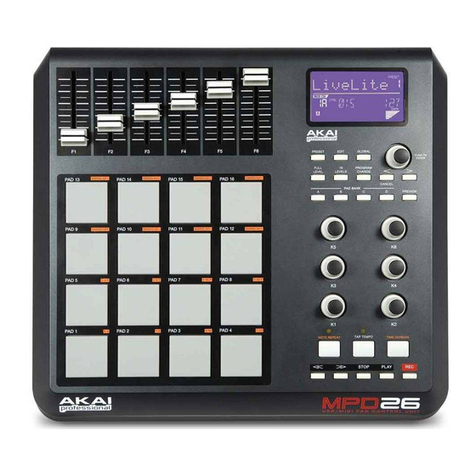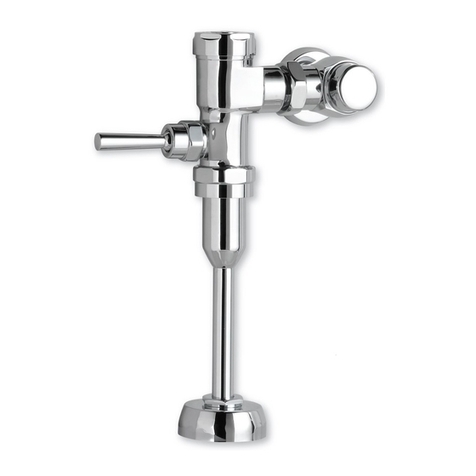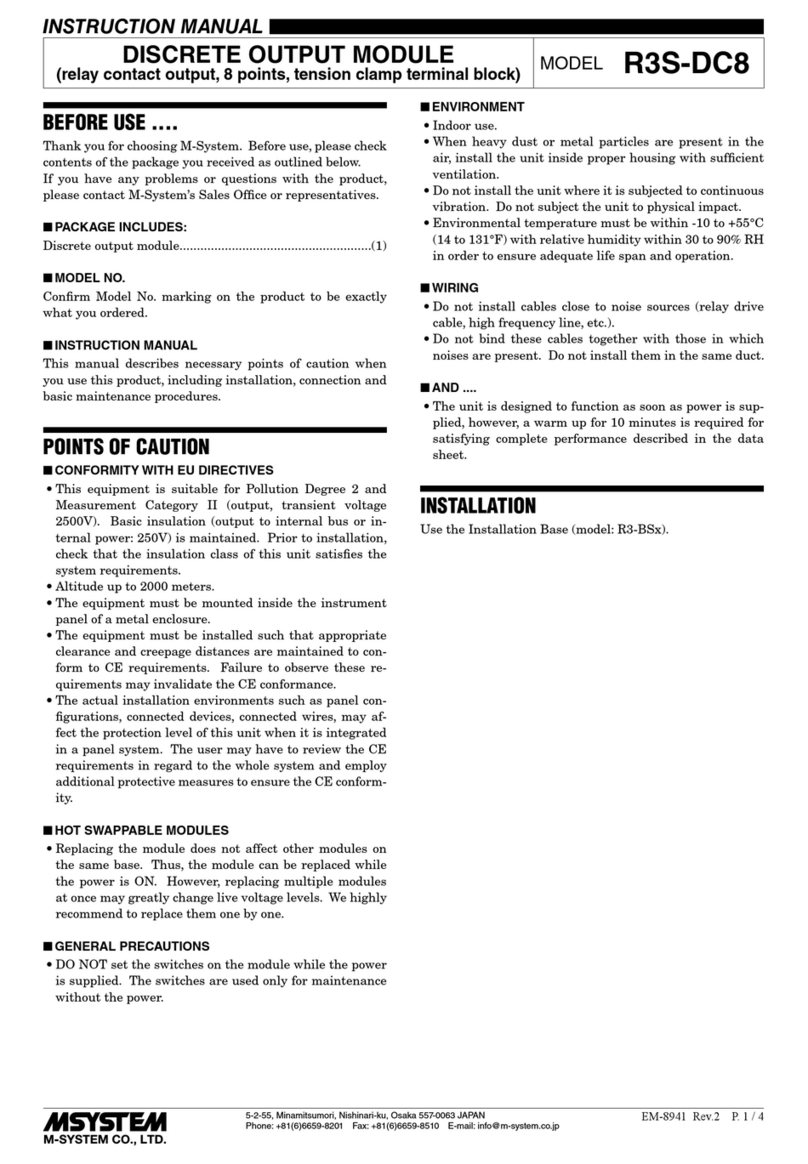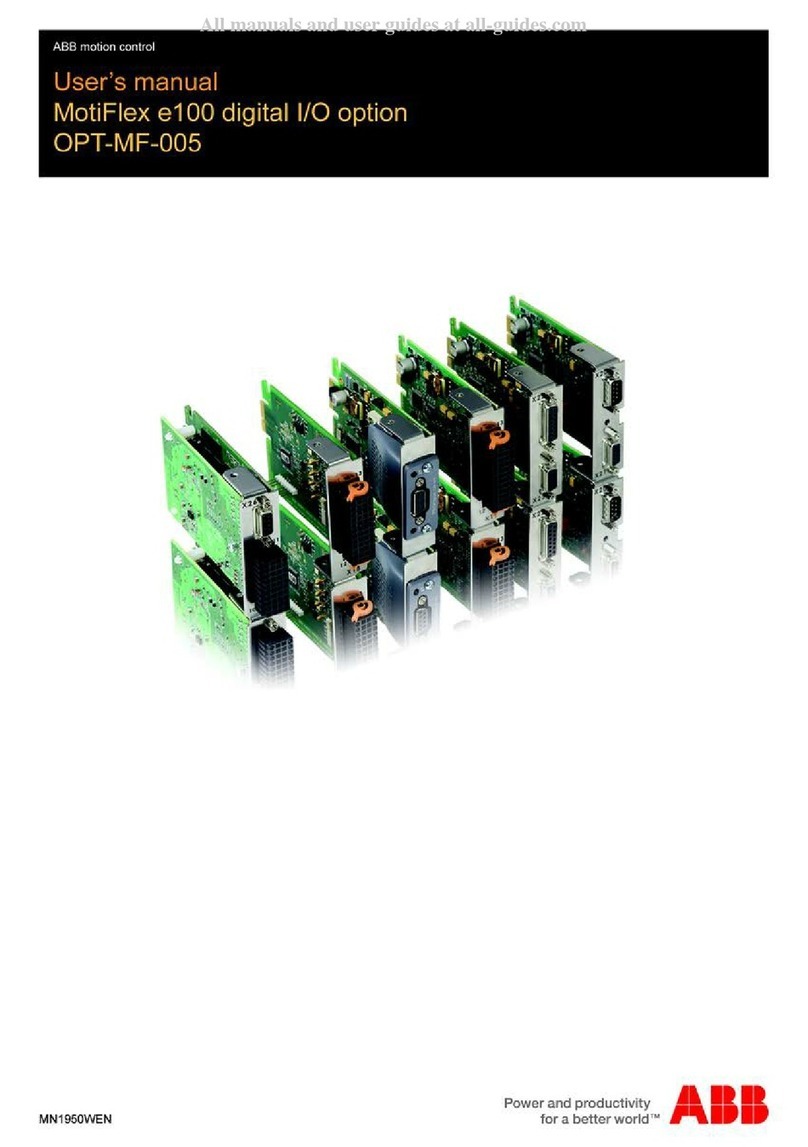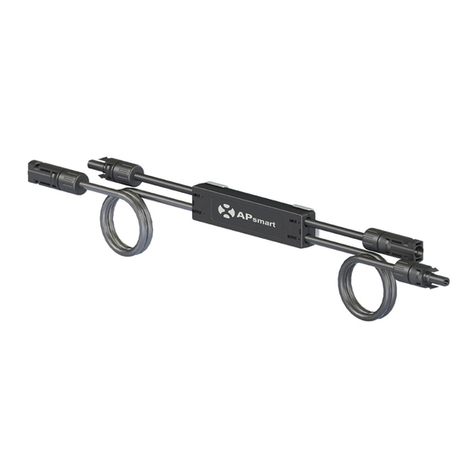General Monitors 2180A User manual

Model 2180A
Single Channel Control Module
Hydrogen Sulfide Gas Applications
The information and technical data disclosed in
this document may be used and disseminated
only for the purposes and to the extent
specifically authorized in writing by General
Monitors.
Instruction Manual 07-05
General Monitors reserves the right to change
published specifications and designs without
prior notice.
MAN2180A
Part No. MAN2180A
Revision C/07-05

ii
This page intentionally left blank.

Model 2180A
iii
Table of Contents
ILLUSTRATIONS ........................................................................................................................ V
LIST OF TABLES....................................................................................................................... VI
INTRODUCTION...........................................................................................................................1
Protection for Life....................................................................................................................................1
Special Warning......................................................................................................................................1
Customer Support......................................................................................................................2
1.0 BEFORE INSTALLATION......................................................................................................3
1.1 Differences Between Models 2180A and 2180..........................................................................3
1.2 General Product Description......................................................................................................3
1.3 Controller....................................................................................................................................4
1.4 Sensor Assembly.......................................................................................................................5
2.0 INSTALLATION......................................................................................................................6
2.1 Location of the Controller...........................................................................................................6
2.2 Power Connections....................................................................................................................6
2.3 Battery Backup...........................................................................................................................7
2.4 Analog Output Connection.........................................................................................................8
2.5 Remote Reset Connection.........................................................................................................8
2.6 Choosing Sensor Locations.......................................................................................................8
2.6.1 Likely Sources of Gas Emission ...................................................................................8
2.6.2 Environmental Factors..................................................................................................8
2.6.3 Film Degradation...........................................................................................................8
2.7 Sensor Installation......................................................................................................................9
2.8 Alarm Wiring Connections .......................................................................................................11
3.0 START UP AND OPERATION.............................................................................................15
3.1 Types of User Interfaces..........................................................................................................15
3.2 Initial Application of Power.......................................................................................................16
3.3 Resetting Latched Alarms........................................................................................................16
3.4 Analog Output..........................................................................................................................17
3.5 Calibration Preparation Instructions.........................................................................................17
3.5.1 Gas Application Options .............................................................................................17
3.6 Calibration Check Mode...........................................................................................................19
3.7 Calibration Mode......................................................................................................................19
3.7.1 Aborting Calibration ....................................................................................................20
3.8 Setup and Setup Check modes...............................................................................................20
3.8.1 Entering the Password................................................................................................21
3.8.2 High Alarm Options.....................................................................................................21
3.8.3 Low Alarm Options......................................................................................................22
3.8.4 Password Enabled/Disabled Option ...........................................................................22
3.9 Setup Mode Selection Table....................................................................................................24
3.10 Check Points for Calibration and Operation ............................................................................25
3.10.1 Frequency of Calibration.............................................................................................25

Model 2180A
iv
3.10.2 Replacing a Sensor.....................................................................................................25
4.0 MAINTENANCE....................................................................................................................26
4.1 General Maintenance...............................................................................................................26
4.2 Periodic System Verification ....................................................................................................26
5.0 TROUBLESHOOTING..........................................................................................................27
5.1 General ....................................................................................................................................27
5.2 Troubleshooting Table .............................................................................................................27
5.3 Fault Codes..............................................................................................................................28
6.0 CUSTOMER SUPPORT .......................................................................................................30
6.1 General Monitors’ Offices ........................................................................................................30
6.2 Other Sources of Help .............................................................................................................30
7.0 APPENDIX............................................................................................................................31
7.1 Warranty...................................................................................................................................31
7.2 Sensor Operating Principle......................................................................................................31
7.3 General Specifications - Controller..........................................................................................33
7.3.1 Mechanical Specifications...........................................................................................33
7.3.2 Environmental Specifications......................................................................................33
7.3.3 Electrical Specifications ..............................................................................................33
7.3.4 System Specifications.................................................................................................33
7.4 General Specifications - Sensor ..............................................................................................33
7.4.1 System Specifications.................................................................................................33
7.4.2 Environmental Specifications......................................................................................33
7.4.3 Recommended Spare Parts List.................................................................................34
7.5 Sample Calibration Schedule and Checklist............................................................................35
7.6 Product Configuration Table....................................................................................................36
7.6.1 Panel Assembly, Panel Mount – 98, Ref: 10199C......................................................37

Model 2180A
v
Illustrations
Figure 1: Model 2180A...........................................................................................................................................4
Figure 2: Battery Backup Diagram .........................................................................................................................7
Figure 3: Protection Circuit for Relay Contacts....................................................................................................12
Figure 4: Junction Box Assembly Sensor.............................................................................................................13
Figure 5: Outline Drawing & Rear Terminal Connections ....................................................................................14
Figure 6: Front Panel Display...............................................................................................................................15
Figure 7: Portable Purge Calibrator......................................................................................................................18
Figure 8: Panel Assembly, Panel Mount –98, Ref: 10199C.................................................................................37

Model 2180A
vi
List of Tables
Table 1: Model 2180A Mounting Parts...................................................................................................................6
Table 2: Sensor Wire Colors ................................................................................................................................10
Table 3: Sensor Cable Colors ..............................................................................................................................10
Table 4: Cable Length..........................................................................................................................................10
Table 5: De-Energized Alarm Relay Contacts......................................................................................................11
Table 6: Energized Alarm Relay Terminations.....................................................................................................11
Table 7: High Alarm Set Points ............................................................................................................................22
Table 8: Setup Display Options............................................................................................................................24
Table 9: Troubleshooting Table............................................................................................................................28
Table 10: Spare Parts List....................................................................................................................................34
Table 11: Calibration Schedule ............................................................................................................................35
Table 12: Product Configuration Table.................................................................................................................37

Model 2180A
1
Introduction
Protection for Life
General Monitors’ mission is to benefit society by providing solutions through
industry leading safety products, services, and systems that save lives and
protect capital resources from the dangers of hazardous flames, gases, and
vapors.
This manual provides instruction for installing and operating the General Monitors
Model 2180A Single Channel Control Module for Hydrogen Sulfide Gas
Applications. While the 2180A system is easy to install and operate, this manual
should be read in full, and the information contained herein understood, before
attempting to place the system in service.
The safety products you have purchased should be handled carefully and
installed, calibrated, and maintained in accordance with the respective product
instruction manual. Remember these products are for your safety.
Special Warning
Through engineering design, testing, manufacturing techniques, and rigid quality
control, General Monitors (GMI) supplies the finest gas detection systems
available. The user must recognize his responsibility for maintaining the gas
detection system in operational condition.
The Model 2180A Single Channel Combustible Gas Monitor contains
components, which can be damaged by static electricity. Special care must be
taken when wiring the system, to ensure that only the connection points are
touched.
General Monitors cautions, as with all equipment of this type, that high levels or
long exposure to certain atmospheres will degrade the sensor and eventually
affect sensitivity. For specific information, see Section 2.6.3. Use in such
atmospheres requires calibration checks on a more frequent schedule than
normal. General Monitors should be consulted for an application feasibility
determination, before installing a system in such atmospheres.
General Monitors’ sensors and sensor housings are designed and tested for use
in certain classes of hazardous atmospheres. Explosion-proof integrity cannot be
maintained, if sensors and sensor housings are operated in other than the “as
designed” condition. Terminal access covers of sensor housings must be
securely fastened. Sensor housing must be installed in accordance with National
Electrical Code acceptable practices, for the class of hazardous atmospheres.
Sensors are designed with sintered metal, or screen covers, that act as flame
arrestors. Do not operate sensors without screen or sintered metal parts in place.

Model 2180A
2
General Monitors’ gas detection systems are primarily safety devices for the
protection of personnel and facilities and must be “always ready”. With proper
installation, calibration, and maintenance, the system provides continuous
monitoring of hazardous areas. The user must assume all liability for misuse of
General Monitors’ gas detection systems.
The system’s full two-year warranty will be voided if customer personnel, or third
parties, damage the system during repair attempts.
Customer Support
For additional product information not contained in this manual, please contact
General Monitors Customer Support. For contact information, see Section 6.1

Model 2180A
3
1.0 Before Installation
1.1 Differences Between Models 2180A and 2180
2180A differences:
• Wiring: Connectors must be rewired for 2180A
• Auto-Calibration
• Front Panel: Polycarbonate with inlay
• Digital Display
Refer to Section 2.0, Installation and Section 3.0, Startup and Operation, for
details.
1.2 General Product Description
The Model 2180A is a single-channel controller, which continuously monitors the
inputs of a sensor. The controller should be mounted in a weather protected non-
hazardous area. Several GMI accessories are available for panel, wall or 19-inch
rack installation. For hazardous areas an explosion proof housing is available for
Class I, Division 1 and Division 2, Groups B, C, and D.
NOTE: Sensor assemblies may be mounted outdoors in hazardous areas
(National Electric Code Class 1, Division 1 and Division 2, Groups B, C,
and D).
The Model 2180A Hydrogen Sulfide (H2S) Monitor has evolved from earlier GMI
systems, which have an established reputation for reliable performance. By
carefully following the instructions in this manual, you can be assured of the most
dependable, continuous protection against hazardous accumulation of hydrogen
sulfide gas. Except for periodic calibration checks, there are no routine
maintenance requirements. The Model 2180A controller is a microprocessor-
based instrument, which features recent advancements in electronic circuitry and
packaging techniques. The system’s sensor is a second-generation product,
incorporating advancements in sensor technology and performance.
Note: The 2180A is different than its predecessor the 2180. The 2180A
calibration is automatic where the 2180 must be manually calibrated.
Please check the individual manuals for details about wiring, set up and
operation of these two units.
CAUTION: The Model 2180A Controller is easy to install and operate. However,
one should fully read and understand this manual before attempting
to place the system in service.

Model 2180A
4
Figure 1: Model 2180A
1.3 Controller
The unit has:
• Sensor Circuit
• LED indicators for High, Low, Fault, Calibration, and Setup
• Mode Button, accessed by using a small screw driver
• Digital Display in ppm
• High, Low & Fault relays
NOTE: A service-loop is necessary between the Model 2180A Controller’s rear
panel terminals and field/power wiring. This service loop permits the
controller to be removed or slid forward for servicing. This service loop is
a definite advantage when replacing or changing a controller.

Model 2180A
5
1.4 Sensor Assembly
One sensor assembly is supplied with the system. This assembly is comprised of
the sensor, the sensor housing, and an optional splashguard.
NOTE: This sensor assembly is CSA approved for Class I, Division 1 and
Division 2, Groups B, C & D hazardous areas.

Model 2180A
6
2.0 Installation
2.1 Location of the Controller
The Model 2180A controller should be installed in a weather-protected, non-hazardous
area. The following hardware is available to assist installation:
Part Description Part Number
98 mm (4”) panel mount frame 10199-1
483 mm (19”) rack mount frame 10200-1
98 mm (4”) blank panel 10191-2
98 mm (4”) wall mount bracket 10202-1
Weatherproof enclosure 10259-1
NEMA 7 explosion-proof enclosure 10099
Desk top cabinet (up to four controllers) 914-006
Table 1: Model 2180A Mounting Parts
The following are guidelines for mounting the controller.
• To minimize the possibility of electrical shock, mounting must be as free from
shock and vibration as possible and in a grounded enclosure that requires a tool
for instrument removal.
• Even though the controller is RFI resistant, do not mount the controller in close
proximity to radio transmitters or similar equipment.
• Care should be taken to assure adequate ventilation.
• Do not mount the controller in a manner, which restricts the natural convection
airflow from normal ambient air.
• The controller operating temperature range is 0°C to 60°C (32°F to 140°F).
2.2 Power Connections
The Model 2180A operates on a nominal line voltage of 117 VAC, 50-60 Hz., 220 VAC
operation is an available option.
NOTE: To eliminate accidental shutdown, GMI does not provide a power ON-OFF
switch. Power must remain disconnected until all other wiring connections are
made.
The following are wiring guidelines for the 2180A Controller:
• If AC is to power the system, connect the line power supply to the terminals L, N,
and GND located at the rear of the controller. Use accepted commercial wiring
practices. (Figure 4)
• Primary DC power may be used instead. Use any 24VDC nominal supply with a
minimum rating of 2 amperes.

Model 2180A
7
• Large gauge wire (up to No. 14) should be used to prevent excessive voltage
drop, and the run should be as short as possible.
• Wiring runs should be as short as possible.
• Connect the positive supply to 24VDC (+) and the negative return 24VDC (-) on
the terminal block. An internal diode protects the system in the event of
inadvertent supply polarity reversal.
2.3 Battery Backup
An emergency battery backup can be used on a system normally operated by AC. The
battery rating (ampere-hour capacity) is dictated by the length of time power outages may
last. A Model 2180A Controller requires approximately 2 ampere (peak) at 24 VDC.
General Monitors recommends that a lead-acid type battery be used. This type of battery
can be expected to last for several years with minimum maintenance.
The customer furnished battery may be connected as shown. No manual or relay
switching is required. Note that in order to keep the 24V lead acid battery (whose voltage
is approximately 27VDC when fully charged) continuously charged through the series
diode, a regulated 28VDC power supply should be used. The cable lengths should be
kept as short as possible. Should AC power to the regulated DC power supply fail,
energy to run the system will be obtained from the fully charged lead acid battery. A 24
ampere-hour capacity battery should power one Model 2180A controller for at least 12
hours. DO NOT USE MORE THAN A 24-VOLT BATTERY.
Figure 2: Battery Backup Diagram

Model 2180A
8
2.4 Analog Output Connection
CAUTION: The Analog Output must either be used or jumpered. If not, the Model
2180A indicates a fault in the normal mode with the display reading “A0”
and the Fault LED flashing.
The two analog output terminals, AO (+) and AO (-), are located at the rear of the unit.
The maximum series resistance permitted is 600-ohms. For a 250-ohm resistor in series
the voltage produced across the resistor by the 4-20mA signal is 1 to 5 VDC. A
differential input amplifier must sense this voltage, as the analog output current cannot be
diverted to any external reference potential.
2.5 Remote Reset Connection
Remote reset (of the alarm relays) are made to the rear panel of the Model 2180A and
should be connected between the RESET and 24VDC(-) terminals. A remote RESET
switch must be a normally open/momentary closed type.
2.6 Choosing Sensor Locations
There are no hard and fast rules governing the selection of optimum sensor locations.
The customer must evaluate conditions at his own facility to make this determination.
However, the following general suggestions should be considered with regard to
particular conditions at the site where a Model 2180A is being installed.
2.6.1 Likely Sources of Gas Emission
In general, the sensor should be located in close proximity to the point where Hydrogen
Sulfide (H2S) gas is most likely to escape into the air. Consideration should also be given
to placing sensors at locations where the H2S may be carried by local air currents,
ventilation equipment, etc.
2.6.2 Environmental Factors
Avoid installing sensors where they will be unnecessarily exposed to wind, rain, dust,
water, shock, or vibration. Observe the temperature range limitations of sensors covered
in Section 7.4.2.
2.6.3 Film Degradation
Sensors may be adversely affected by prolonged exposure to certain materials. Loss of
sensitivity or corrosion may be gradual if such materials are present in low concentrations
or it may be rapid at high concentrations. The more important materials adversely
affecting sensors are:
• Halides: compounds containing Fluorine, Chlorine, Bromine, and Iodine
• Silicones (often contained in greases and aerosols). Silicones do not chemically
attack the sensor. They instead, coat it and therefore reduce or stop its response
to H2S.

Model 2180A
9
• Acid Vapors
• Caustic liquids or vapors
The presence of such materials in an area does not preclude the use of a sensor. The
feasibility of using a sensor in such areas must be determined by an analysis of the
specific factors in each application. Consult General Monitors before attempting any such
installation.
Sensors used in these areas usually require more frequent calibration checks than
normal and typically have a shorter life. In many such applications the normal two-year
warranty does not apply.
CAUTION: General Monitors discourages the painting of sensor assemblies. If the
sensor head is painted-over, gas will not be able to diffuse into the sensor
and many paints contain lead, which can poison a sensor.
2.7 Sensor Installation
The standard sensor assembly consists of a sensor housing (GMI P/N 10252-1) and
sensor (P/N 50445-1, -5, or -9), (Figure 4).
NOTE: When installing the sensors be sure to leave enough clearance from the ground
and walls to be able to fit the calibration bottles supplied with the system onto the
sensor head.
The dash (-) numbers correspond to full-scale ranges of 0-100, 0-50 or 0-20 ppm,
respectively. The sensor assembly is recognized safe for United States National Electric
Code Class I, Division 1 and Division 2, Groups B, C, and D hazardous areas, and is
approved by the Canadian Standards Association (CSA).
NOTE: Each H2S Sensor is shipped with a red plastic cap fitted over the sensing head.
Inside the cap is a desiccant. DO NOT remove this cap until power has already
been applied to the system. Save the cap and re-cap the sensor when powering
down the system or if the system power is off for an extended period of time. The
desiccant packs may be saved and reused providing that they have been stored
in a dry area.
CAUTION: Sensors should ALWAYS be mounted pointing downward to prevent the
collection of moisture or contaminants.

Model 2180A
10
To connect the cable to the sensor:
1. Remove the housing lid (P/N 10252-1) to reveal the terminal strip. The sensor is
connected in the housing according to color designations as follows:
Sensor Housing
Terminal Number Sensor
Wire Color
1 White
2 Black
3 Red
4 Green
Table 2: Sensor Wire Colors
2. Install the sensor assembly with conduit in hazardous areas. A good design
would include conduit seals to prevent water build-up.
3. Connect the cable so that the terminal color at the sensor housing matches the
terminal color at the controller. General Monitors’ sensor leads are color coded,
and should be connected to the rear terminal connector as shown in the following
table:
Terminal Connector Sensor Cable
Color
W1 White
B2 Black
R3 Red
G4 Green
Table 3: Sensor Cable Colors
The maximum cable length, using four conductor cable, should be such that the total loop
resistance of any signal path (for example the black leads) does not exceed 20-Ohms at
25º Celsius. The following table may be used as a guide to determine cable length versus
wire size:
AWG Feet Meters
14 3,375 1,030
16 2,250 685
18 1,350 410
20 900 275
Table 4: Cable Length
Two accessories are available which can be supplied with the system, if ordered:
• Splash Guard, P/N 10395-1
• Test Gas Applicator, P/N 10460-2
Both of these products are designed to provide extra protection in problem environments.

Model 2180A
11
NOTE: Shielded cable should be grounded only at the controller, using the ground
terminal provided. Care should be taken to insure that the outer braid does not
have contact with the conduit or junction box.
2.8 Alarm Wiring Connections
The Model 2180A alarm relays may be operated as normally de-energized or normally
energized, and latching or non-latching.
The Low and High alarm contacts for customer use are DPDT (double pole, double
throw), and are rated 4 amps at 115 VAC, resistive. The Fault alarm contact is SPDT
(single pole, double throw), 4 amps at 115 VAC, resistive. These contacts are brought out
to terminals on the rear of the controller as follows:
CONTACT CONDITION
ALARM RELAY OPEN COM CLOSED
Fault 1 C 2
Low Alarm 2,3 C 1,4
High Alarm 2,3 C 1,4
Table 5: De-Energized Alarm Relay Contacts
The above chart shows the High and Low alarm contacts in the standard de-energized
state (with power applied). These two alarm relays are normally de-energized unless
specially ordered for normally energized operation. The Fault relay is always supplied
normally energized. If normally energized, the terminations are:
CONTACT CONDITION
ALARM RELAY OPEN COM CLOSED
Fault 1 C 2
Low Alarm 1,4 C 2,3
High Alarm 1,4 C 2,3
Table 6: Energized Alarm Relay Terminations

Model 2180A
12
CAUTION: Inductive loads, such as bells, buzzers, relays contactors solenoid valves,
etc., connected to the High alarm, Low alarm, and Fault alarm relays must be
clamped down as shown in the diagrams below. Unclamped inductive loads
can generate voltage spikes in excess of 1000 volts. Spikes of this
magnitude will cause false alarms and possible damage.
Figure 3: Protection Circuit for Relay Contacts

Model 2180A
13
Figure 4: Junction Box Assembly Sensor

Model 2180A
14
Figure 5: Outline Drawing & Rear Terminal Connections
Table of contents
Other General Monitors Control Unit manuals
Popular Control Unit manuals by other brands

Nevco
Nevco MPCX Basketball Operator instructions

Tyco
Tyco DPV-1 manual

Innodisk
Innodisk EMPL-G202 Series manual
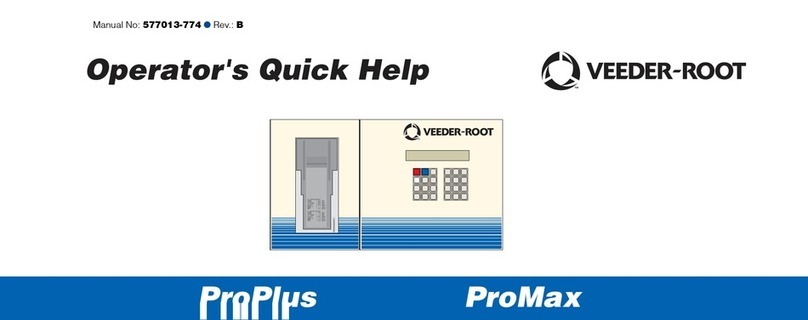
Veeder-Root
Veeder-Root ProPlus Operator's quick help

Clack Valves
Clack Valves Water Specialist CI Programming and Cover Drawing Manual

Mitsubishi Electric
Mitsubishi Electric MELSEC iQ-RX40NC6B user manual
